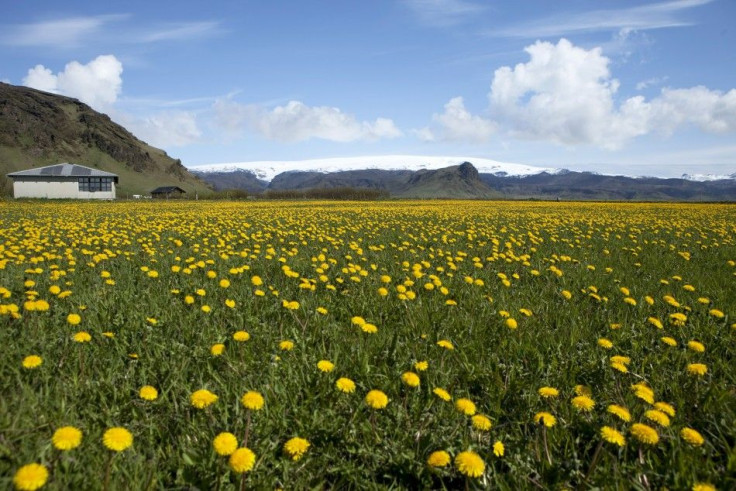Iceland Volcano Katla Sparks Fears of Travel Chaos

Experts are watching activity at Iceland's Katla Volcano with a close eye, warning that the rumblings beneath the powerful volcano could hint at a 2011 eruption that could spew an ash cloud that would dwarf the 2010 eruption of Eyjafjallajokull.
The words Iceland and volcano have taken on a new meaning in recent years. They've come to be synonymous with airport cancellations and travel chaos.
READ: Why Airplanes Can't Fly through Ash Clouds
The 2010 eruption cost airlines roughly $2 billion and reminded citizens of the global world how vulnerable modern society is to the whims of nature.
Katla, one of the largest volcanoes in Iceland, is named after an evil troll. It is situated just east of Eyjafjallajokull, the notorious volcano whose eruption paralyzed European air traffic last year.
It boasts a peak of nearly 5,000 feet and a caldera diameter of 6mi, covered by up to 2,300 feet of ice.
There have been 16 documented eruptions between 930 and 1918. Katla averages two large eruptions every century and has not erupted for 93 years. It's long overdue for its next event, and because pressure has built up for such a long period of time, the eruption could be even more catastrophic.
Katla has a much larger magma chamber and is more powerful than its famous neighbor - and the latest news isn't good. In recent weeks, an increasing number of small earthquakes were detected beneath the volcano, a sign that an eruption could be imminent.
Just last week, a tremor measuring magnitude four on the Richter scale caused the ground in the area to shake.
To put things in perspective, Katla's last major eruption in 1918 continued for more than a month. It turned night into day, starved crops of sunlight, and killed off much of the livestock in the area. The eruption melted a good deal of the ice sheet covering Katla, which flooded surrounding farmlands with swaths of water that some accounts say measured as wide as the Amazon.
Officials have drawn up maps of evacuation plans and are holding regular meetings with experts to track Katla's activity.
Concerns grew considerably greater on Wednesday as locals noted the 93rd anniversary of the last major eruption on Oct. 12, 1918.
READ: The Ten Most Active Volcanoes in the World
Thorir Kjartansson, who manages a souvenir and wool shop in Vik, a town of 300 people close to the flood path of Katla, told The Associated Press that he's been waiting for a large eruption since he was a teen.
We've been waiting for it a long time, and we know that it will come one day, he said.
Kjartansson said his father witnessed the 1918 eruption and used to warn him before he set out in his car each morning to look north toward Katla's glacier cap.
Disaster officials have drafted an evacuation plan and set aside temporary housing for towns close to Katla. However, many fear that residents will have less than an hour to evacuate once the volcano erupts.
Though Katla is much bigger than Eyjafjallajokul, the impact on air traffic would depend on a variety of factors such as wind direction and the amount of gas in the magma.
Because Eyjafjallajokul was high in gas, it sent ash high into airspace causing havoc. A similar cloud at a lower altitude would have a negligible impact on air travel.
Elsewhere in Iceland, another volcano, Helka, is also long overdue for a large eruption. Helka is one of Iceland's most active volcanoes and sits in the path of most international flight patterns. Known as the Gateway to Hell in the Middle Ages, Helka could produce a dangerous ash cloud that, in addition to disrupting air travel, could lower overall temperatures across the Northern Hemisphere by blocking out sunlight for days or weeks.
READ ALSO:
Canary Islands: Two New Eruptions Observed in Subsea Volcano
Ash Cloud Chaos Costing Airlines and Tourism Industry Millions
© Copyright IBTimes 2024. All rights reserved.






















